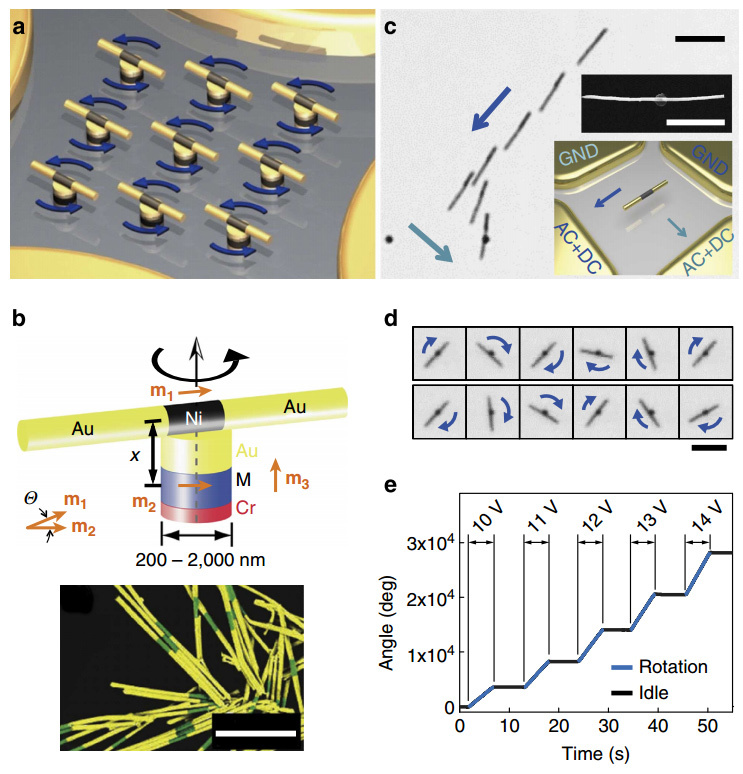The smallest and fastest nanomotor: 1 micron, 18,000 RPM

Specialists from the University of Texas at Austin have assembled the world's smallest and fastest artificial motor . According to the developers, the motor measuring 1 micrometer rotated for 15 hours, accelerating to 18,000 RPM (300 revolutions per second). The total number of revolutions exceeded 240,000. This is a significant achievement, because previous models of such engines rotated by no more than 5000 RPM in just a few minutes.
Nanomotors are made of three basic components: the tiny Au / Ni / Au wire works like a rotor, located on an Au / M / Cr magnet with a quadrupole system of four microelectrodes connected in pairs. They play the role of a stator. In a magnet, M is a magnetic material, such as nickel and cobalt. The top layer of gold is used to adjust the distance between the magnet and the nanowire in order to change the magnetic attraction on the rotor.
A three-layer magnet is a key component of the system. Magnetic attraction is so precisely regulated that the magnet is able to pull the wire to the base, but not so much as to prevent its rotation.
Engineers managed to solve two key problems: the automatic assembly of nanomotors and the control of their movement. The assembly was carried out using the new “electric tweezers” technique, which allows nanoparticles to be placed in the substrate along arbitrary paths with an accuracy of 150 nm, controlling their angle and velocity in a pulsating current (see Figure c ).

The experiment showed that it is possible to remotely change the angle of inclination of nanomotors and control the speed of rotation of the rotors. Including simultaneously managing a group of motors. The rotation speed directly depends on the square of the electric field strength.
The development of efficient nanomotors is a crucial step towards the creation of nanoelectromechanical systems (NEMS), which will perform medical operations in the future. For example, inject drugs inside the human body, or even look for and remove diseased cells from the body, as illustrated by the University of Texas at Austin.

Scientists emphasize that the maximum rotation speed was checked purely for the sake of experiment, in order to assess the reliability of the design. In practice, metal parts so rapidly rotating inside the body are unlikely to be beneficial.
The scientific work was published in the April issue of Nature Communications magazine ( mirror ).
